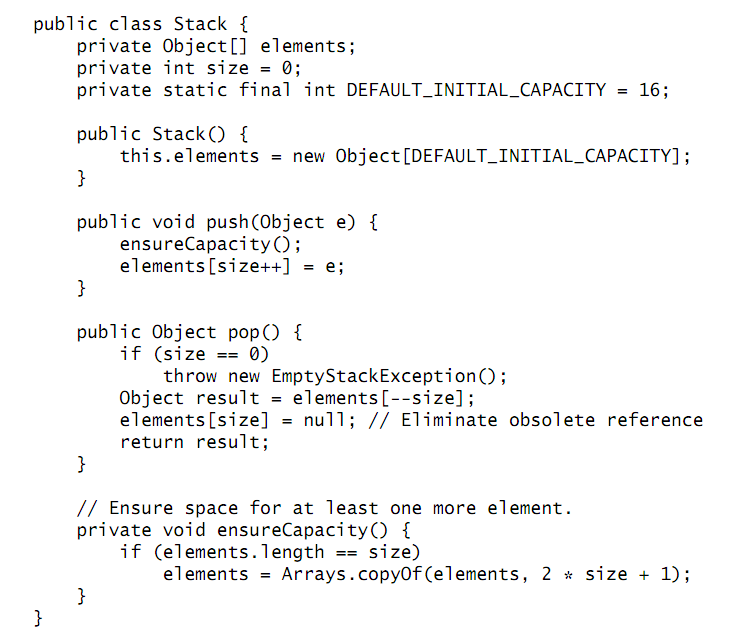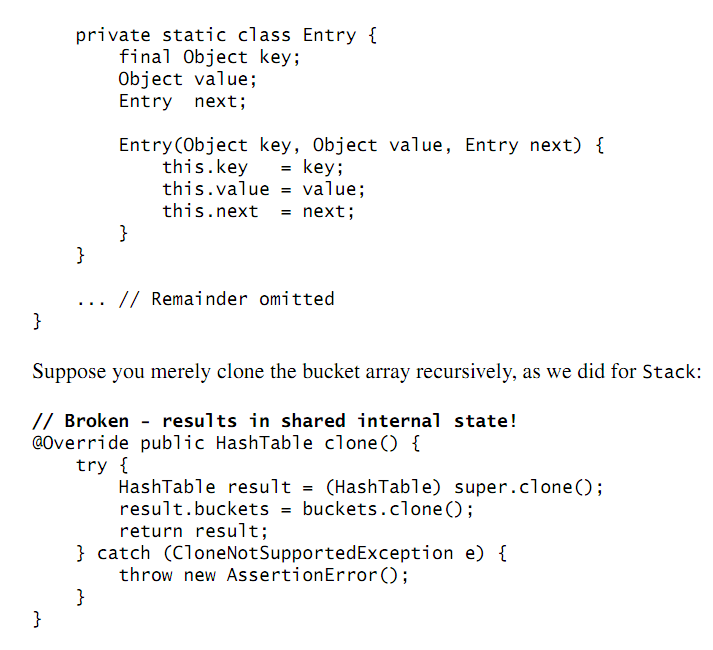Effective Java 英文 第二版 读书笔记 Item 11:Override clone judiciously
x.clone()!=x will be true
x.clone().getClass()==x.getClass() will be true
x.clone().equals(x) always true.
意味着深复制,新建对象,数据与结构与原对象一致,
Copying an object will typically entail creating a new instance of tis class,but it may require copying of internal data structures as well.
if you override the clone method in a nonfinal class,you should return an object obtained by invoking super.clone.
In practice, a class that implements Cloneable is expected to provide a properly functioning public clone method.\
never make the client do anything the library can do for the client.

这样的类直接调用super.clone()后,会造成elements指向同一个数组对象
correct

In effect the clone method functions as another constructor;you must ensure that it does no harm to the original object and that
it properly established invariants on the clone.
the clone architecture is incompatible with normal use of final fields referring to mutable objects,


问题出在clone之后的next引用的是原来数据的next entry,做法就是我们需要更新copy的时候把新数据的next也传入来赋值一下
Though the clone has its own bucket array ,thsi array references the same linked lists as the original,
which can easily cause nondeterministic behavior in both the clone and the original.
A fine approach to object copying is to provide a copy constructor or copyfactory.
A copy constructor is simply a constructor that takes a single argument whose type is the class containing the constructor
for example,
public Yum(Yum yum);
A copy factory is the static factory analog of a copy constructor:
public static Yum newInstance(Yum yum);



【推荐】凌霞软件回馈社区,博客园 & 1Panel & Halo 联合会员上线
【推荐】轻量又高性能的 SSH 工具 IShell:AI 加持,快人一步